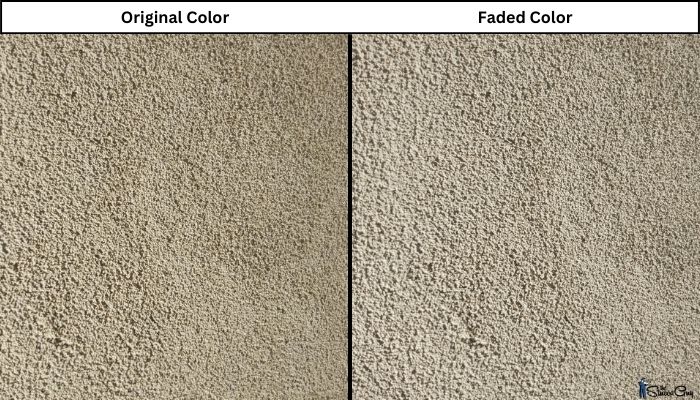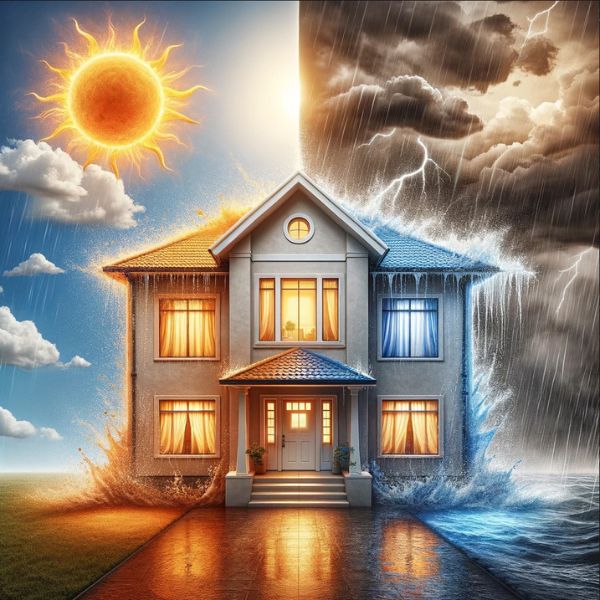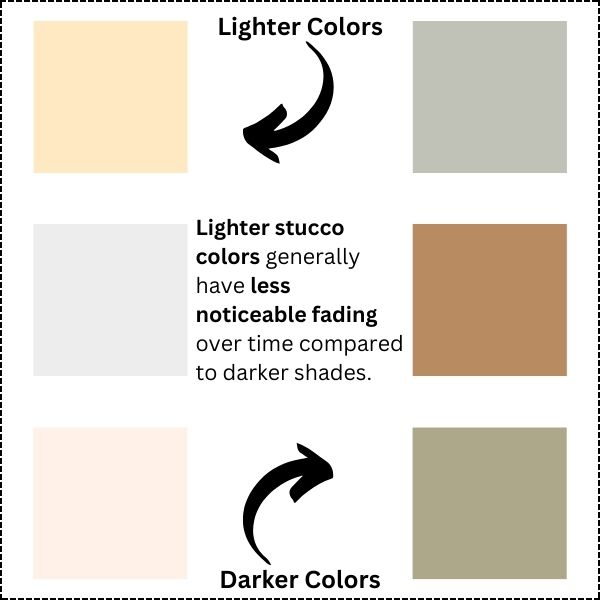In recent years, acrylic stucco has emerged as a favored finish material among homeowners and contractors alike, and a lot of its popularity isn't just rooted in its durability and flexibility. The real appeal, I think, lies in the vast array of color options available that just aren't available for traditional types of finishes.
With that being said, there's still a question that often arises and that is whether the vibrant color of the finish will withstand the elements. Let's explore the truth about acrylic stucco and how long its color really lasts.
Does Acrylic Stucco Fade Over Time?
In short, yes, acrylic stucco can fade over time, which I see on a regular basis, especially on southern facing walls, here in Northern California. The fading is mainly due to long-term exposure to sunlight and the elements, both of which break down the pigments in the color.

Helpful Tip: A good tip when choosing a color would be to keep in mind that some colors fade more easily than others, especially darker shades which tend to show wear more quickly compared to lighter ones.
What Causes It To Fade?
The main reason why acrylic stucco finishes lose their vibrant color mainly comes from the sun itself, which takes the biggest toll on the pigments. Harsh weather like rain is also a contributing factor to this, because the acrylic is not entirely waterproof, so water does pass through the system.
Over time, these two elements break down the pigments in the stucco, leading to a gradual loss of the color intensity that was originally there. It is also worth mentioning that dirt accumulation that tends to gather on the walls can also affect the stucco's appearance and can actually make it appear to be faded or dull.

How Much Will it Fade?
The degree of fading can differ significantly from wall to wall, but how much direct sunlight and rain the stucco is exposed to will be a major factor in how much it actually fades. Walls that are constantly hit by the sun's rays or are hit hardest by incoming storms are more prone to noticeable fading compared to walls that have less exposure or are protected by an overhang.
Inconsistent Fading for Certain Walls: Since this is the case and every wall has different exposure to the elements, you may notice that your home's color fades unevenly, with certain areas maintaining their vibrancy better than others, depending on how hard they are affected by the sun and rain.
As an example, here in California, the walls that are south facing are usually the ones that are hit the hardest by both the sun and the rain and this is where a lot of fading occurs. I have even seen cases where walls that were covered by an overhang that never see sun or rain maintain their color much better, and in some cases I have seen no signs of fading at all in areas like these!
How Can I Prevent or Minimize Fading on Acrylic Stucco?
The best thing you can do to minimize fading, would be to choose colors that are less likely to have stronger color variances when fading does occur.
Lighter vs Darker Colors: Lighter acrylic stucco colors and shades naturally show less visible color loss and need very little upkeep to keep looking fresh, compared to darker colors that will show much more color variance when it comes to fading.

Choose a Cement Based Finish Instead: If you are not committed to an acrylic finish and are okay with the color options that a traditional type of finish offers, then you might want to choose a finish material like this instead because they tend to perform a lot better when it comes to fading, overall. You can find out more about the differences between the two different finish materials here.
Other Methods: For those of you out there that want a little extra protection, you can add a UV-resistant sealer to your stucco walls after they are cured, for an added layer of defense. Just keep in mind that these sealants need to be reapplied regularly to ensure they continue to work effectively and can add up to a significant cost overall, when considering how often they will need to be reapplied.
Can Faded Acrylic Stucco Be Restored?
If you're not happy with how your acrylic stucco looks, don't worry, as there are a couple of ways to bring it back to life!
Paint the Walls: One option is to give it a fresh coat of paint, which can restore the original color or can be changed to a completely different color altogether. Painting it would also help protect the walls in other ways too, not just to remedy the fading that has occurred.
Recoat the Walls: You also have the option to apply a fresh layer of acrylic stucco on top of the current finish, which can alter both the color and texture. This is a lot more money to go this route though and is usually not the first option for dealing with color fading alone. This would be better suited if the situation to change the texture of the walls was the primary goal.
By using either of these techniques, you can successfully enhance the look of your home's exterior, providing it with a refreshed beauty and safeguarding it from future fading.

